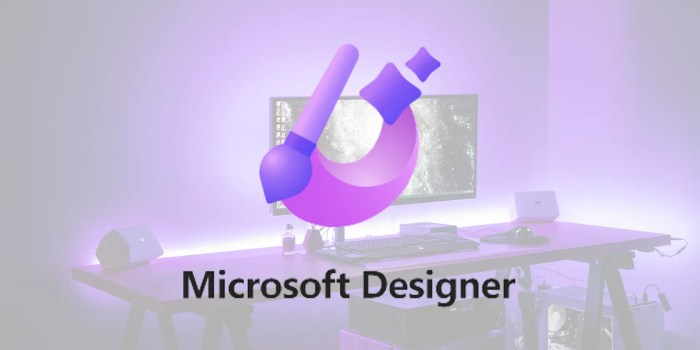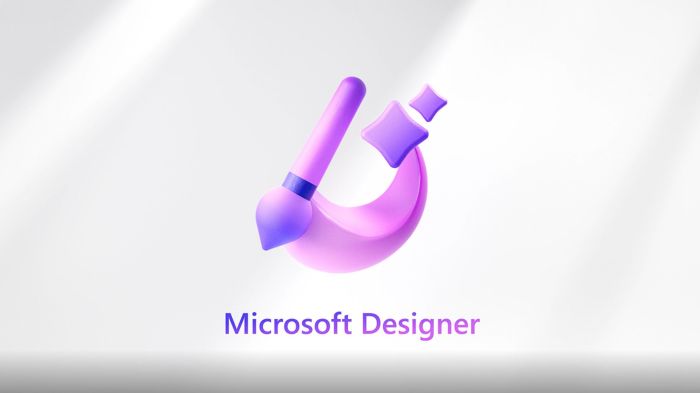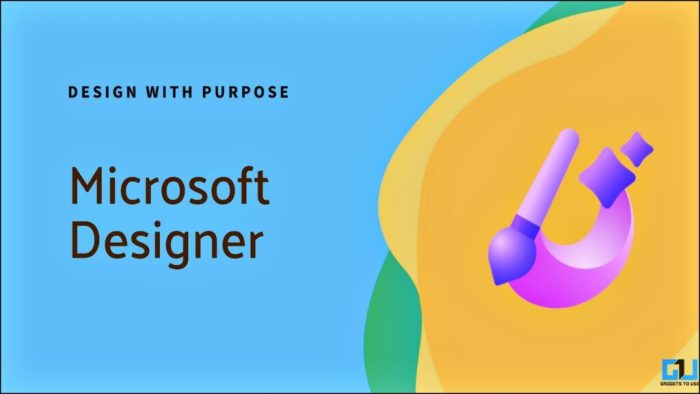Diving into the realm of Microsoft Designer, this introduction captivates readers with a glimpse into the exciting and dynamic role that combines creativity and technology. From shaping innovative designs to enhancing user experiences, Microsoft Designers play a pivotal role in crafting the digital landscape of tomorrow.
As we delve deeper, we uncover the essential skills, educational requirements, design processes, and the crucial aspects of collaboration and communication that define the realm of Microsoft Designer.
Microsoft Designer Overview

Microsoft Designers are professionals responsible for creating visually appealing and user-friendly interfaces for Microsoft products and services. They work closely with developers, product managers, and other stakeholders to ensure the design aligns with the overall goals and objectives of the project.
Skills Required for a Microsoft Designer
Microsoft Designers need to possess a unique set of skills that differentiate them from other design roles. While they share similarities with graphic designers and UX/UI designers, Microsoft Designers require a deep understanding of Microsoft's design language, principles, and guidelines.
- Proficiency in Microsoft design tools such as
Sketch, Figma, or Adobe XD
- Strong knowledge of Microsoft's design systems like Fluent Design System
- Ability to collaborate effectively with cross-functional teams
- Experience in designing for various platforms including web, desktop, and mobile
Education and Training
To become a successful Microsoft Designer, a typical educational background would include a bachelor's degree in graphic design, visual communications, or a related field. Additionally, having a strong understanding of computer science, software development, and user experience design can be beneficial in this role.
Specialized Training Programs
There are various specialized training programs and certifications that can enhance the skills of a Microsoft Designer. Some popular options include:
- Microsoft Certified: Azure Solutions Architect Expert
- Microsoft Certified: Power Platform App Maker
- Microsoft Certified: Azure AI Engineer Associate
Continuous Learning and Skill Development
Continuous learning and skill development are crucial for success in the field of Microsoft Design. Design trends and technologies are constantly evolving, so staying up-to-date with the latest tools and techniques is essential. Microsoft Designer should regularly participate in workshops, online courses, and industry events to sharpen their skills and stay competitive in the ever-changing landscape of design.
Design Process and Methodologies

Microsoft Designers follow a structured design process and employ various methodologies to ensure successful outcomes in their projects. By combining creativity with strategic thinking, they are able to deliver innovative solutions that meet user needs effectively.
Step-by-Step Design Process
- Research and Analysis: Microsoft Designers begin by conducting thorough research to understand user needs, market trends, and competition.
- Ideation and Concept Development: Based on research findings, designers brainstorm ideas and develop concepts that address the identified problems or opportunities.
- Wireframing and Prototyping: Designers create wireframes and prototypes to visualize the user interface and test functionality before moving into the final design phase.
- Visual Design: The visual aesthetics of the design are developed, including color schemes, typography, and imagery to create a cohesive look and feel.
- User Testing: Designs are tested with real users to gather feedback and make necessary adjustments for optimal usability.
- Iterative Refinement: Based on user feedback, designs are refined and improved through multiple iterations until the final product meets user expectations.
Common Design Methodologies
- Design Thinking: Microsoft Designers often employ design thinking principles to empathize with users, define problems, ideate solutions, prototype, and test iteratively.
- Agile Methodology: Agile practices such as sprints, stand-up meetings, and continuous feedback loops are commonly used to facilitate collaboration and flexibility in design projects.
- Lean UX: Lean UX principles focus on minimizing waste and maximizing value by quickly validating assumptions through rapid prototyping and testing.
Successful Design Projects by Microsoft Designers
One notable example of a successful design project by Microsoft Designers is the redesign of the Microsoft Office suite, which aimed to improve user productivity and collaboration across devices.
Another example is the development of the Fluent Design System, a comprehensive design language that unifies the look and feel of all Microsoft products for a consistent user experience.
Collaboration and Communication
Effective collaboration and communication are essential components of a successful Microsoft Design project. By working closely with other team members, Microsoft Designers can leverage diverse perspectives and expertise to create innovative and impactful design solutions.
Importance of Collaboration
- Collaboration allows for the integration of different ideas and skills, leading to more comprehensive and well-rounded design concepts.
- Team members can provide valuable feedback and insights that can help refine and improve the design process.
- Working collaboratively fosters a sense of ownership and shared responsibility, leading to a stronger sense of unity within the team.
Communication Strategies
- Regular team meetings and status updates help keep everyone informed and aligned on project goals and progress.
- Utilizing visual aids such as mood boards, sketches, and prototypes can effectively convey design concepts and ideas to team members.
- Open and honest communication fosters trust and transparency within the team, enabling constructive feedback and discussion.
Presenting Design Ideas to Stakeholders
- Prepare a clear and concise presentation that highlights the key features and benefits of the design solution.
- Use storytelling techniques to engage stakeholders and communicate the design rationale effectively.
- Be prepared to answer questions and address concerns raised by stakeholders, showcasing a deep understanding of the design process and decisions.
User Experience (UX) Design
User Experience (UX) design plays a crucial role in shaping the success of Microsoft products and services. It focuses on creating meaningful and seamless interactions between users and technology, ensuring that users can easily navigate, understand, and enjoy the products they use.
Key Principles of UX Design at Microsoft
- Accessibility: Microsoft Designers prioritize making products that are accessible to all users, regardless of abilities or limitations.
- Consistency: Maintaining a consistent design language across all Microsoft products helps users feel familiar and comfortable with the interfaces.
- Responsiveness: Designers ensure that products respond quickly and smoothly to user input, creating a seamless experience.
- Intuitiveness: User interfaces are designed to be intuitive and easy to understand, reducing the need for extensive user training.
- Feedback: Providing clear feedback to users about their actions helps them understand the system's responses and make informed decisions.
Examples of Improved User Experiences by Microsoft Designers
- Microsoft redesigned the Windows operating system interface to make it more user-friendly and intuitive, resulting in higher user satisfaction and productivity.
- The introduction of Microsoft Office 365 brought a more cohesive and integrated experience for users across different devices, enhancing collaboration and productivity.
- The Microsoft Edge browser was redesigned to improve speed, performance, and security, offering users a more seamless browsing experience.
Accessibility and Inclusivity

Accessibility and inclusivity are crucial aspects of design that Microsoft Designers prioritize in their projects. By creating designs that are accessible to all users, regardless of their abilities or limitations, Microsoft Designers ensure that their products are usable by a diverse range of individuals.
Inclusivity goes beyond accessibility to also consider factors such as language, culture, and socio-economic background, making sure that everyone can benefit from Microsoft's products and services.
Accessibility Features in Microsoft Design Projects
Microsoft Designers incorporate various accessibility features in their projects to make them more inclusive and user-friendly. Some examples include:
- Providing alternative text for images to assist users who are visually impaired
- Implementing keyboard shortcuts for users who may have difficulty using a mouse
- Designing high contrast interfaces for users with low vision
- Adding closed captioning or transcripts for videos to cater to users with hearing impairments
- Ensuring proper tab order and focus indicators for users who navigate using assistive technologies
Importance of Considering Diverse User Needs
It is essential for Microsoft Designers to consider diverse user needs in their design projects to ensure that their products are accessible to everyone. By taking into account the needs of users with disabilities, language barriers, or other limitations, Microsoft Designers can create a more inclusive and welcoming user experience.
This not only expands the reach of Microsoft's products but also demonstrates a commitment to diversity and equality in design.
Conclusion

In conclusion, the journey through the world of Microsoft Designer unveils a fusion of artistic vision and technical prowess. From creating accessible designs to revolutionizing user experiences, Microsoft Designers embody the essence of innovation and inclusivity in the ever-evolving design landscape.
Essential FAQs
What are the key responsibilities of a Microsoft Designer?
Microsoft Designers are tasked with creating visually appealing and user-friendly designs for various digital platforms and products within the Microsoft ecosystem.
What software tools are commonly used by Microsoft Designers?
Microsoft Designers often utilize tools like Adobe Creative Suite, Sketch, Figma, and other design software to bring their creative visions to life.
How important is continuous learning for success as a Microsoft Designer?
Continuous learning is crucial for Microsoft Designers to stay updated with the latest design trends, technologies, and methodologies, ensuring their work remains innovative and relevant.
What role do Microsoft Designers play in enhancing user experiences?
Microsoft Designers focus on creating intuitive and seamless user experiences by following key principles of UX design and incorporating user feedback to refine their designs.
How do Microsoft Designers ensure accessibility and inclusivity in their designs?
Microsoft Designers prioritize accessibility features and consider diverse user needs to create inclusive designs that cater to a wide range of users, ensuring no one is left behind.













